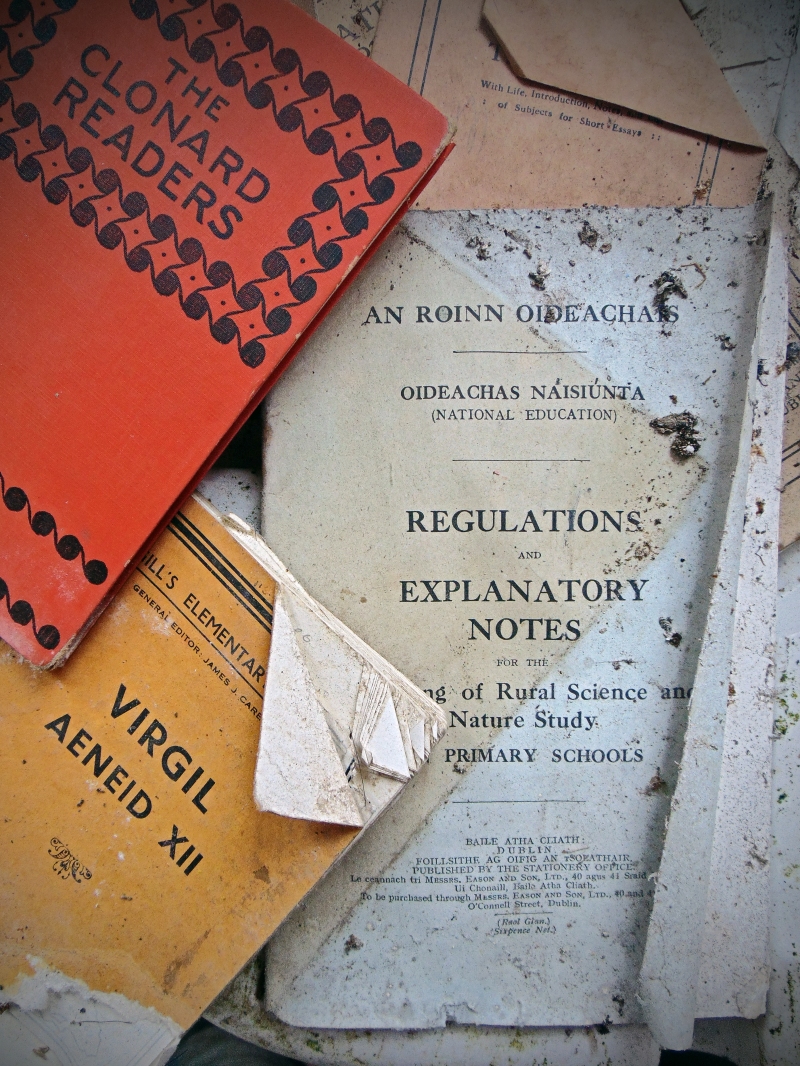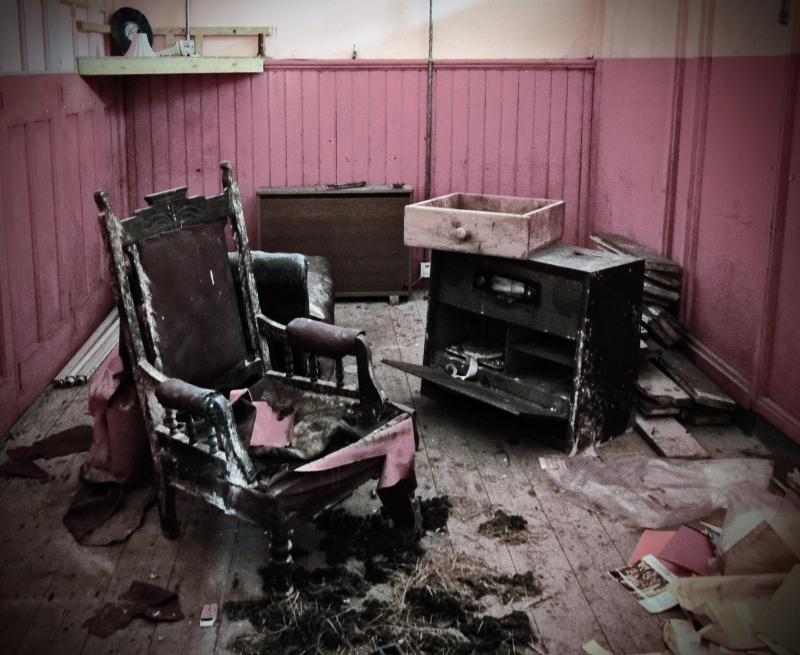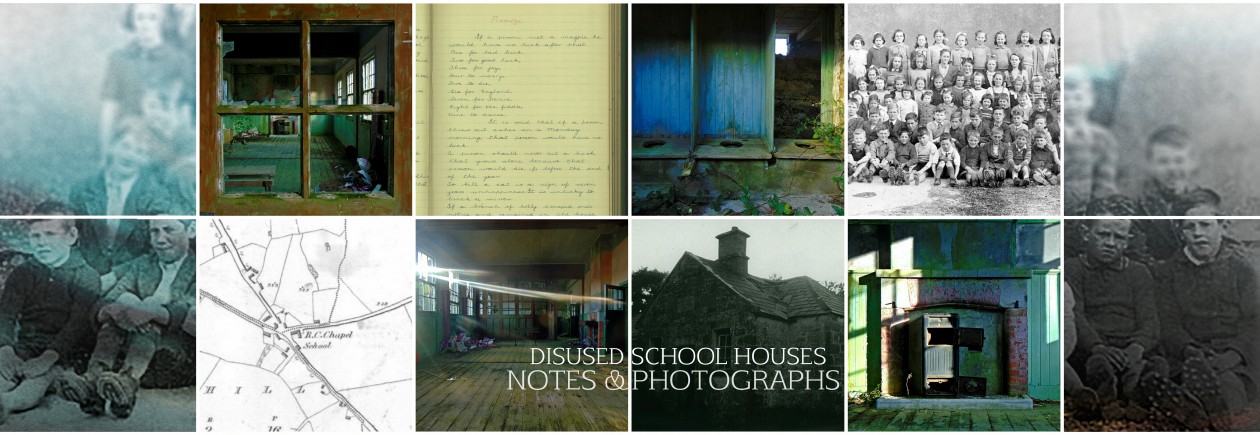Cluain Chumhra National School, Cluain Chorta townland, Co. Kerry
(dated: c.1910 – 1920)
NGR: 050749, 100942
The Dingle Peninsula (or Corca Dhuibhne) in Co. Kerry stretches some 30 miles (48 km) into the Atlantic Ocean from Ireland’s south-west coast, and is a popular spot for holiday makers. The peninsula is dominated by mist-covered mountain ranges that form its spine, running from the Slieve Mish range to Mount Brandon, Ireland’s second highest peak. The coastline consists of steep sea-cliffs, broken by sandy beaches, with two large sand spits at Inch in the south and the Maharees to the north. Off the west coast lie the Blasket Islands; inhabited until 1953 when the last remaining islanders were forcefully evacuated to the mainland on 17 November by the Irish government. It is an area of outstanding natural beauty, and despite a busy tourist season, it is a peaceful place that retains it’s rural feel.
The principal town on the peninsula is Dingle; a major fishing port in Ireland, with the industry dating back to about 1830. The fishing industry brought the railways to the town, and Dingle was formerly the western terminus of the narrow gauge Tralee and Dingle Light Railway. The railway station opened on 1 April 1891, closed for passenger traffic on 17 April 1939 and for regular goods traffic on 10 March 1947, finally closing altogether on 1 July 1953, by which time a cattle train once per month was the sole operation. The railway line weaved along the south coast of the peninsula on it’s way from Tralee, crossing a flat, low-lying area between Lispole and An Cnoicin known as Droichead An Imligh (Emlaghmore Bridge). It is adjacent to the former railway line and the modern N-86 road in the townland of Clooncurra ,that you’ll find an early 20th century school house no longer in use.

The date/name plaque on the building has fallen off, but comparing it’s form and architecture to other similar school houses, you could guess at a date of construction of sometime between 1910 and 1920. Certainly the building does not appear on the First Edition 25-inch Ordnance Survey map dating to the turn of the 20th century. At this time, (and since the time of the the First Edition 6-inch Ordnance Survey map of the 1840s), there is a school house marked in the nearby village of Lispole, a presumed predecessor to the Clooncurra school.

The building comprises a detached U-plan school with a central two-bay single-storey block flanked by three-bay, single-storey, gable-fronted traversing blocks to the sides. Built in the early 20th century, this rural school once fulfilled an important function for the surrounding rural community. Its balanced design with gable-fronted bays gives the building a strong presence within the surrounding countryside. Although disused, the building remains in good repair and is enhanced by the retention of its historic slate roof, cast-iron rainwater goods, timber sash windows and doors (NIAH).

Inside, the building is frozen in time, and there is a treasure of old school furniture, books (though some of these appear to be from a secondary school), and bric-à-brac dating from around the time when the school closed. This may have been sometime in the late 1980s. Certainly plans were in place for it’s closing as early as 1981, and a search of governmental records show that the schools closure was the subject of Dàil debate on the 17th of December, 1981 when Minister for Education John Boland noted that a suitable site had been obtained for a new central school which would replace and amalgamate Minard Castle and Clooncurra national schools.


Searching the records of the Irish Folklore Commission* we find no shortage of local stories from Clooncurra. When these stories were written down in the late 1930s, the area was a strong Gaelic speaking region, and the tales recorded in the Folklore Commission’s records are entirely in the Irish language.
If you or someone you know attended this national school, please do get in touch and share any stories, anecdotes, photographs, or any other memories you may have.

*In 1937 the Irish Folklore Commission, in collaboration with the Department of Education and the Irish National Teachers’ Organisation, initiated a revolutionary scheme in which schoolchildren were encouraged to collect and document folklore and local history. Over a period of eighteen months some 100,000 children in 5,000 primary schools in the twenty-six counties of the Irish Free State were encouraged to collect folklore material in their home districts.


Hello, according to “Dingle” by the late Father Jack McKenna (Mac Publications 1985), Clooncurra National School was opened in January 1911. I believe it closed in 1993 when the new Scoil Eoin Báiste opened as an amalgamation of Clooncurra and Minard Castle Schools. I was living in Lispole at the time. The location of Clooncurra on the side of a stretch of straight road led to the death of at least one child in a road traffic accident.
The earlier school in Lispole was Ardamore National School, near the church. The only remnant is a the “name stone” which is now outside Dingle Library.
LikeLiked by 1 person
These are fantastic leads – thanks so much Laurence
LikeLike
I took a photograph of the Ardamore School stone today which you can have. (I actually posted it on the Dingle Peninsula Museum Facebook Page iwhere attention been drawn to this article. https://www.facebook.com/permalink.php?story_fbid=1451165344924734&id=183075821733699&comment_id=1451202268254375¬if_t=feedback_reaction_generic¬if_id=1487336756892013
LikeLike
Oh and I took some not particularly good photographs of Minard Castle School last year. It’s still intact but disused.
LikeLike
Just looking through the Irish Newspaper Archives, there was an advertisement in the Kerry People dated 2 October 1909 inviting tenders for “the building of the Clooncurra National School, about 1/4 mile from Lispole Station, in accordance with the Plans and Specification which can be seen at the Presbytery, Dingle.”
LikeLiked by 1 person
There is an article by Deirdre Walsh about the closure of the school in The Kerryman, dated 23 July 1993.
LikeLike
I’ll check that out Laurence. Thank you for the info.
LikeLike